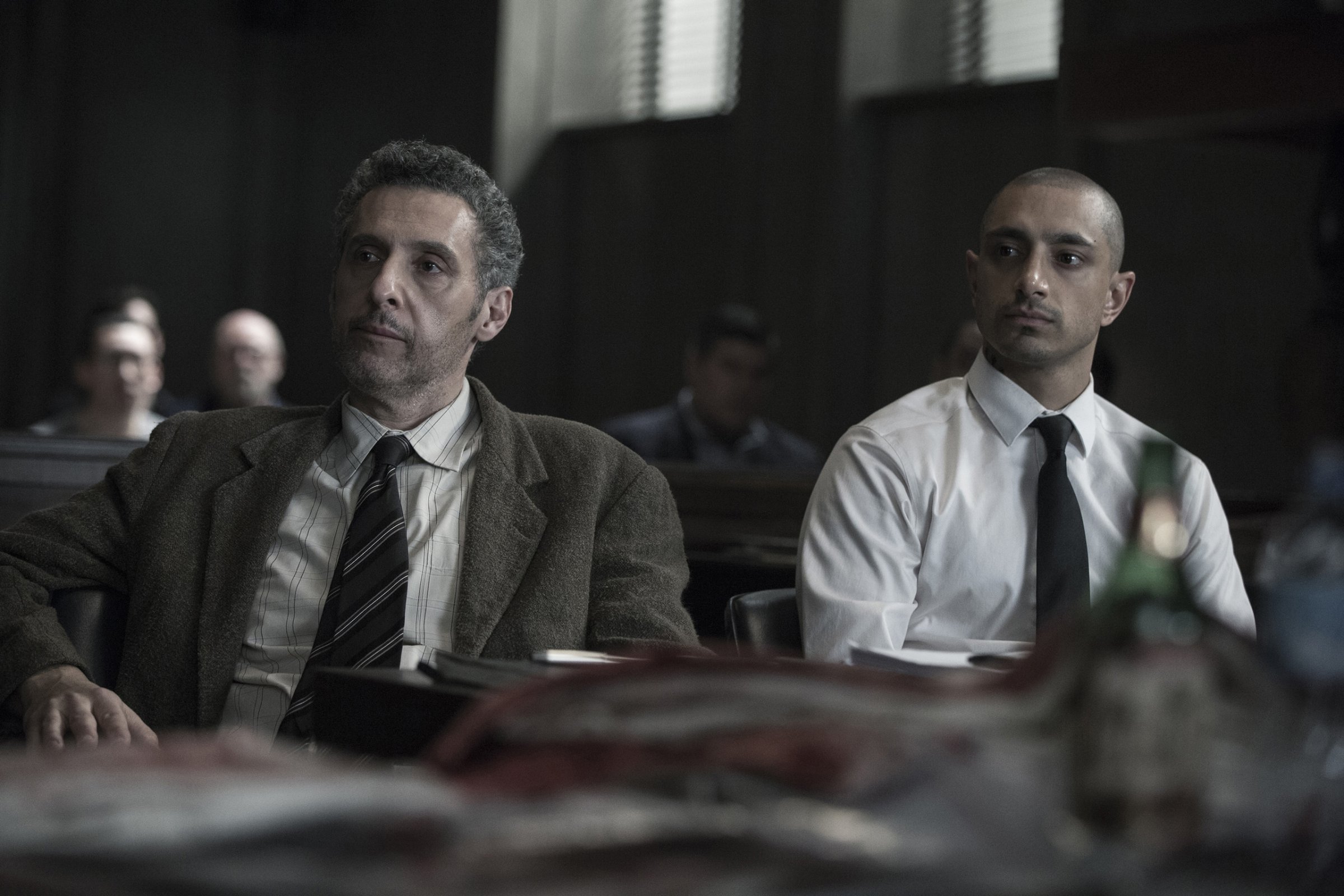
The Night Of, HBO’s limited series that concluded its run Sunday night, seemed to underperform in terms of public consciousness. It failed to spark conversation online as vivid and impassioned as whodunits, real and fictional, have tended to of late. The form in part explains the muted response: While The Night Of was seeded with potential culprits who might have murdered Andrea, its detective story never quite caught. But that wasn’t the point, anyway.
The series left its central investigation with Naz, our protagonist, off the hook due to a hung jury, perfectly split, six for acquittal and six for conviction. It was the perfect count for a show that never seemed to make up its own mind about Naz’s culpability, never providing the succor of hard confirmation. All we’re left with is the prosecution deciding to pursue a promising new lead, as Naz turns to drugs for some escape from his ruined prospects; neither his mother nor his community can see him, covered in prison tattoos, as anything but a wrongdoer.
Like the deeply flawed Netflix true-crime series Making a Murderer, The Night Of was a show that was at its best when it considered the problems of the American justice system. That Netflix show got its grist from the incident that gave it a title: Steven Avery was “made” into a person who could be convicted of murder on the basis of shaky evidence because of pre-existing prejudice against him from a past, overturned conviction. In this story, the presumption of innocence is a concept but not a reality. A valence of the title is that Avery’s first, wrongful conviction effectively unsocialized him.
Where Making a Murderer fell short for me was in its advocacy on Avery’s behalf: its filmmakers had found a situation worthy of coverage, but tried to over-prove their case by walking viewers through a story too hand-holding by half. It was reverse-engineered to get you to sympathize with an already sympathetic figure, as though the filmmakers didn’t trust their own material. The Night Of, allowed to invent any story it wanted, was a bit less, well, jury-rigged; it was made with a dispassionate, chilly sense of observing the justice system at work, rather than Making a Murderer‘s seething outrage.
The Night Of‘s flaws went hand-in-hand with its triumphs. The murder victim as a doomed, drug-abusing beauty would have leaned too heavily on misogynistic cliché were the show not quite so aware of how the legal system lends itself to cliché. The girl matters to prosecutors only in the sense that her beauty and her sad fate make it easier to nail Naz, and as her alleged killer’s trial picks up its own sinister momentum, she fades out of the story. The Night Of spent perhaps too much time and narrative energy on situations in Rikers that beggared belief—particularly in the case of Michael K. Williams‘s kingpin character, whose rule over the prison bordered on ominpotent. But the outlandishness of some prison details helped sell Naz’s descent. If The Night Of occasionally went a bit far in conveying the circumstances that turn a “good kid” who made a mistake into a violent, tattooed drug mule, it was at least in service of selling that transformation, and done with the brio and confidence Making a Murderer seemed to lack.
To some of its detractors, the show violated a trust with viewers. The show’s posters—never a reliable source of information about a program’s content, but still—used the slogan “What Happened The Night Of.” But the show ultimately cared little about that question; it might have been better had the show never depicted the events leading up to the murder at all. That it did, however, ratifies its status as one of the year’s most intriguing Trojan horses.
The night of matters little from a human perspective, as, convicted or acquitted, it effectively ended Naz’s life as a contributing member of society. Crime stories are about serving justice. This very unusual one argued that such a goal was impossible as soon as Naz entered the penal system. Who did what matters less than the fact that an entire class of Americans, almost entirely nonwhite, exist in a totally different, extralegal sphere. They haven’t been found guilty, but they’re trapped nonetheless.
More Must-Reads From TIME
- The 100 Most Influential People of 2024
- The Revolution of Yulia Navalnaya
- 6 Compliments That Land Every Time
- What's the Deal With the Bitcoin Halving?
- If You're Dating Right Now , You're Brave: Column
- The AI That Could Heal a Divided Internet
- Fallout Is a Brilliant Model for the Future of Video Game Adaptations
- Want Weekly Recs on What to Watch, Read, and More? Sign Up for Worth Your Time
Contact us at letters@time.com